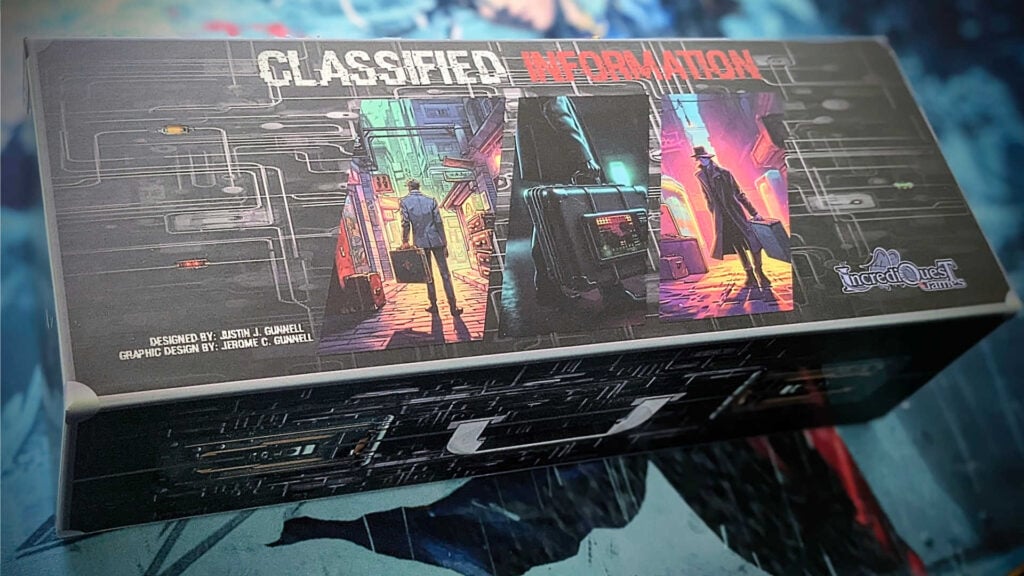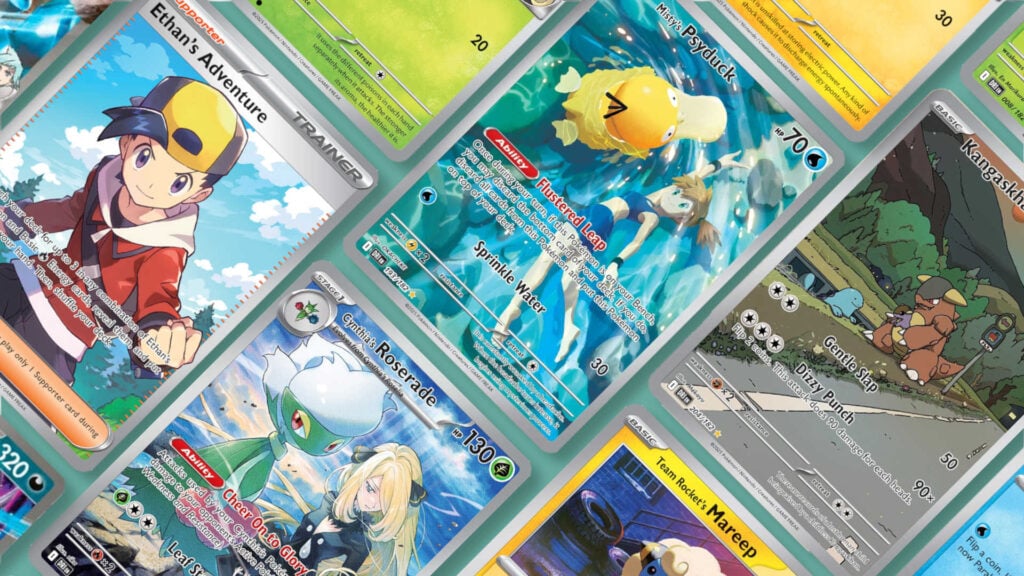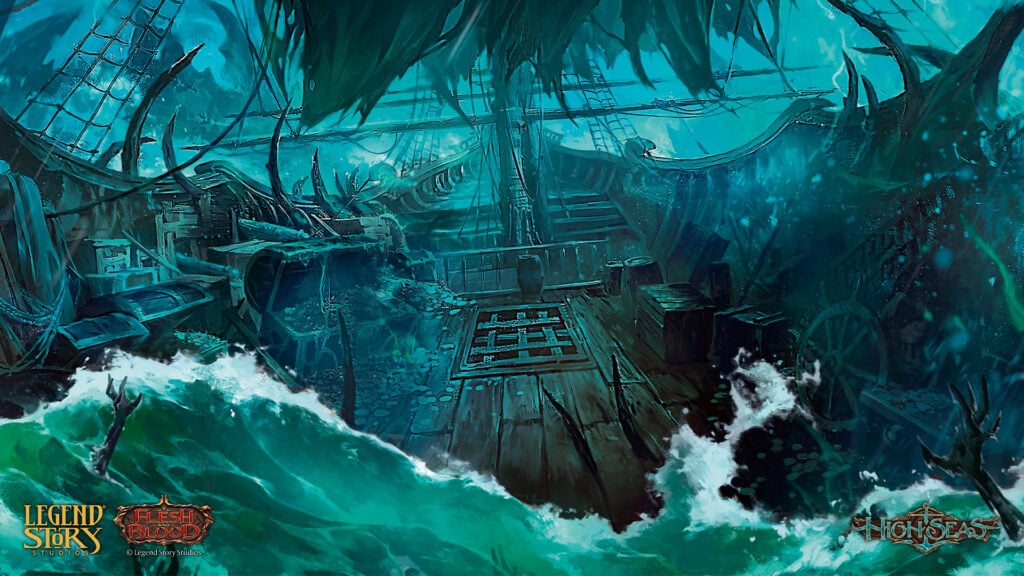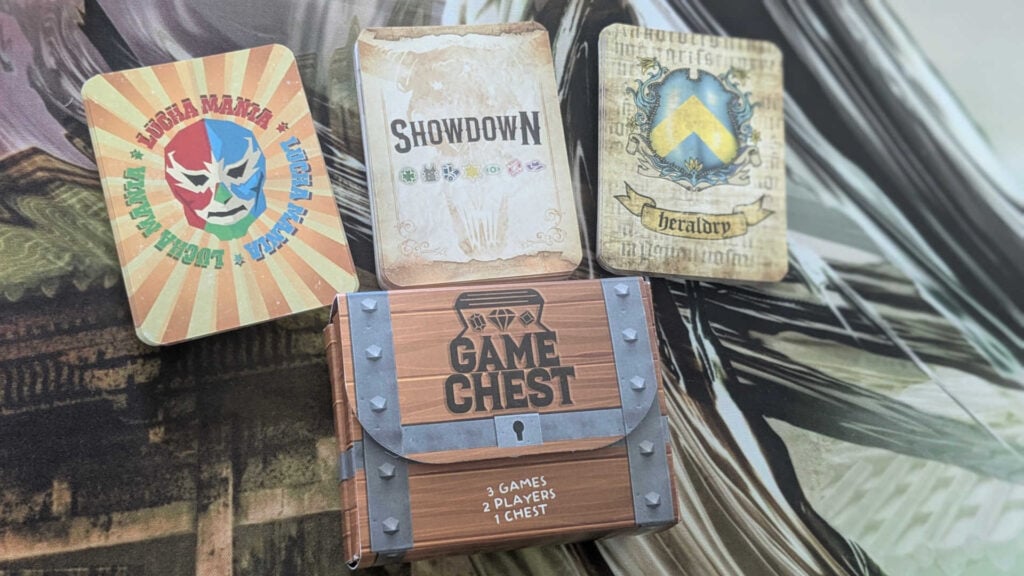Image credit to the author
One of the most impressive approaches in modern game design is the concept of minimalism. Not in terms of a game’s aesthetic, though that can also have a certain appeal, but the minimalist approach of distilling a game down to the smallest number of components possible, and eking every last gameplay option out of it.
Games such as Love Letter and Welcome to the Dungeon are hugely compelling and successful implementations of this kind of minimalist design philosophy, with a tiny number of cards still providing an almost unbelievable variety and longevity. Two-player game Classified Information, the standard edition (and complete base game) which is comprised of just 18 cards, attempts to pull off a similar trick with its own minimalist design.
Does it succeed? Let’s find out!
Table of Contents
ToggleGetting Started With Classified Information
Though a Deluxe Edition is available (and, in the interests of full disclosure, the Deluxe Edition was provided to me by the publisher, Incrediquest Games, for review purposes), all you need to play Classified Information is any one of the 18 card decks.
Each deck is numbered and has a color code name too; Set 1 is Citrine, Set 2 is Emerald, and Set 3 is Ruby. At present, Sets 2 and 3 are only available in the Deluxe Edition; there are also a limited number of promo and exclusive cards available at the Incrediquest Games webstore, for even more options when it comes to playing Classified Information.
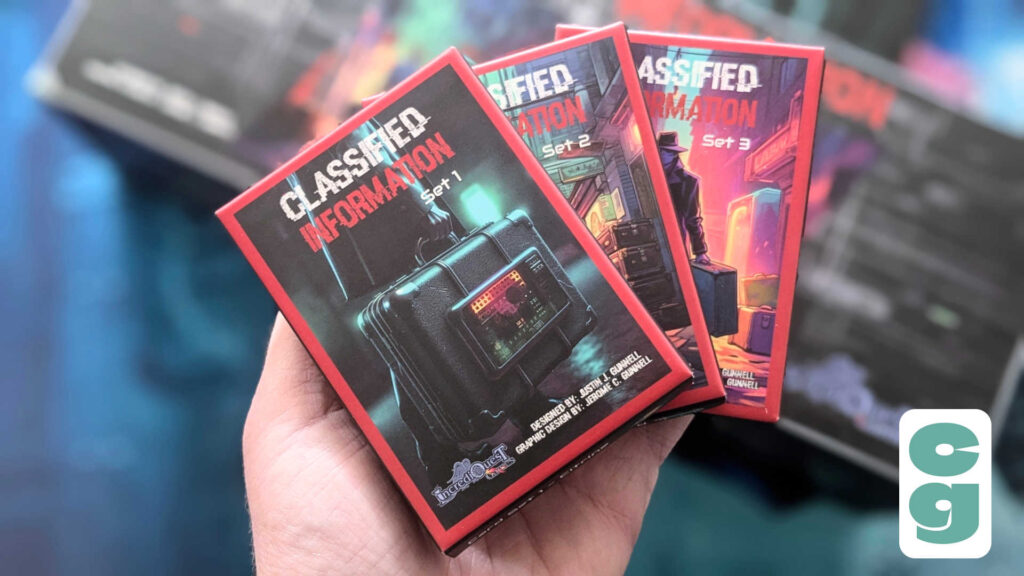
Set 1 is the most straightforward of the three decks to begin with, so that’s where I’d recommend starting your first game if you do have multiple decks.
Setting up a game of Classified Information couldn’t be easier; give each player a Cypher Wheel card, shuffle the 18-card deck, and then deal two cards to each player as their starting hand. A third card is dealt to each player and kept face down as their Suitcase card; players can view their own Suitcase at any time, but it’s kept secret from the opponent until the end of the game.
Once two more cards are dealt face down to begin the encrypted card pile, the remaining cards are placed between the players to become the draw deck, and play can begin.
How to Play Classified Information
The aim of Classified Information is to end the game holding a card with a card number that matches one of the digits on the opponent’s Suitcase card. Simple, right? Except players may also have up to three Guard cards in play, which can “protect” the Suitcase digit shared by the Guard card. So in actual fact, to win, players must have a card in hand which matches an unguarded Suitcase number.
Though that may sound complicated, gameplay is incredibly simple. The deck is comprised of cards numbered from 1 to 9, with two cards of each number. Players have two cards in their hand at the start of the game, and each turn will draw a card and play a card.
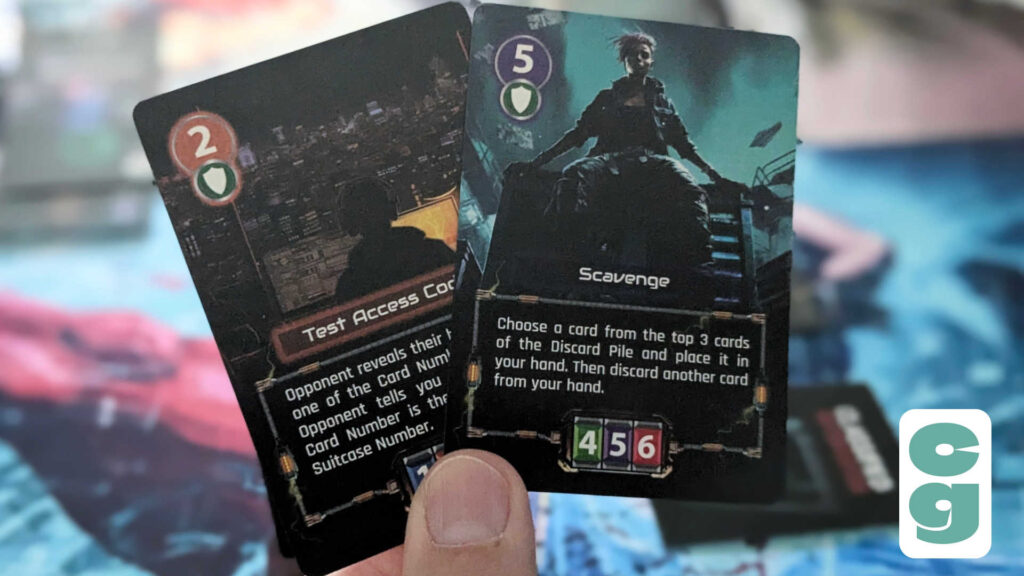
When playing a card, players have several options. They can deploy the card, which means carrying out its ability text then discarding it (unless otherwise instructed by the card’s ability). For example, in the above image the Scavenge card can be seen; its ability allows the player to choose a card from the top three cards of the discard pile (which is arranged in a row, so that all cards are visible), then place it in their hand and discard one of their other cards.
Another option is to enlist it, which means using one of the three card symbols to use the card. A shield symbol means that the card can be enlisted as a Guard; players will play this face down in front of their Suitcase, and each player may have three Guards in play.
A dagger symbol on a card means that it’s an Assassin; these can be used to attempt to assassinate (that is, to remove from play) Guard cards. The Assassin player chooses a Guard to target; if any of the numbers on the Guard’s three digit code match any of those on the Assassin card, both cards are discarded. If the attempt fails, the Guard remains in play and the Assassin is discarded; however, when an attempt fails, the Assassin player still gains information, and can look at one of the cards in the defending player’s hand.
The third symbol shows a dagger inside a shield, which means the card is a Sentinel. A Sentinel can be used as a Guard or an Assassin; if used as a Guard, it’s treated as a Guard for the rest of the game, and if it’s played as an Assassin, it’s discarded after an assassination attempt as normal.
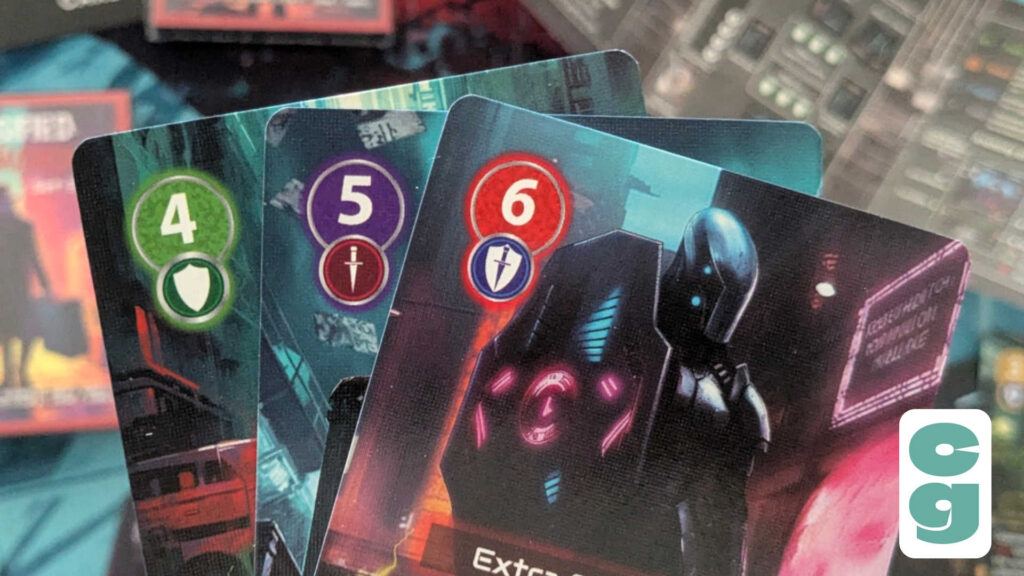
The third and final option when playing a card is to encrypt; this means playing a card to the face down encrypted card pile, where it remains for the rest of the game. All three symbols can be seen in the image above; from left to right, these are Guard, Assassin, and Sentinel.
Play continues until the last card from the deck is drawn; the player taking the last card from the draw deck has their turn as normal, then each player has one final turn. All Suitcase cards and any Guards who are still face down (they may be face up due to certain card effects) are revealed, and the winner is the player whose final hand card matches any digit on their opponent’s suitcase code, as long as their opponent doesn’t have a Guard with the same number.
If only one player has an unguarded digit matching on their last card and their opponent’s Suitcase, they win the game. If neither player has an unguarded matching digit, the player with the most Guards wins; if this happens and both players have the same number of Guards, the game is tied. Finally, if both players manage to make an unguarded match, the tie is broken by the number of Guards; the game ends in a tie if each player has the same number of Guards in this situation.
Is Classified Information Fun to Play?
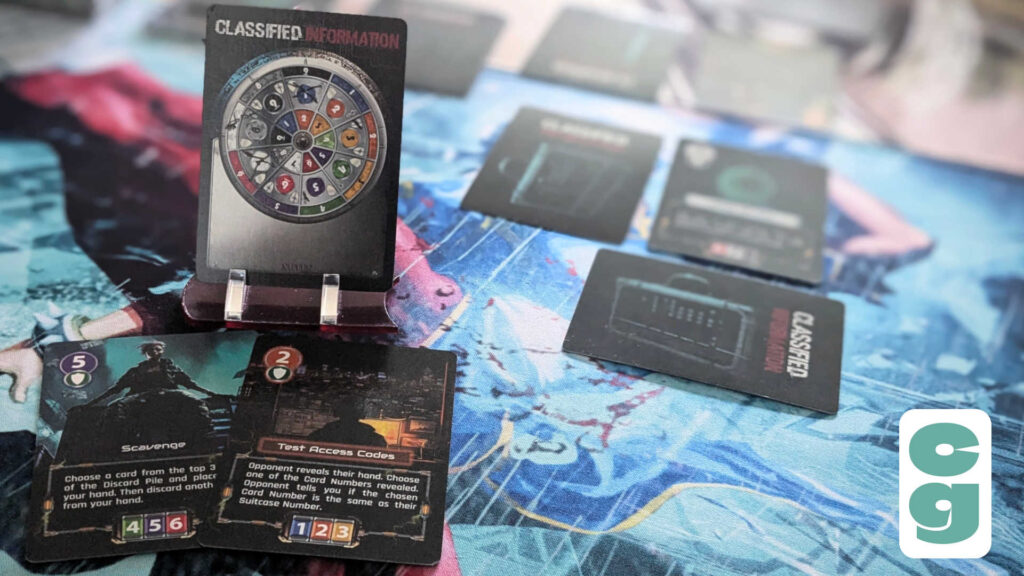
Though it takes a game or two to get used to the card abilities, the simple “draw a card, play a card” gameplay soon becomes second nature. Classified Information is a game that consistently punches above its weight in terms of its depth, with the multiple uses for each card allowing for a surprising range of options on any given turn.
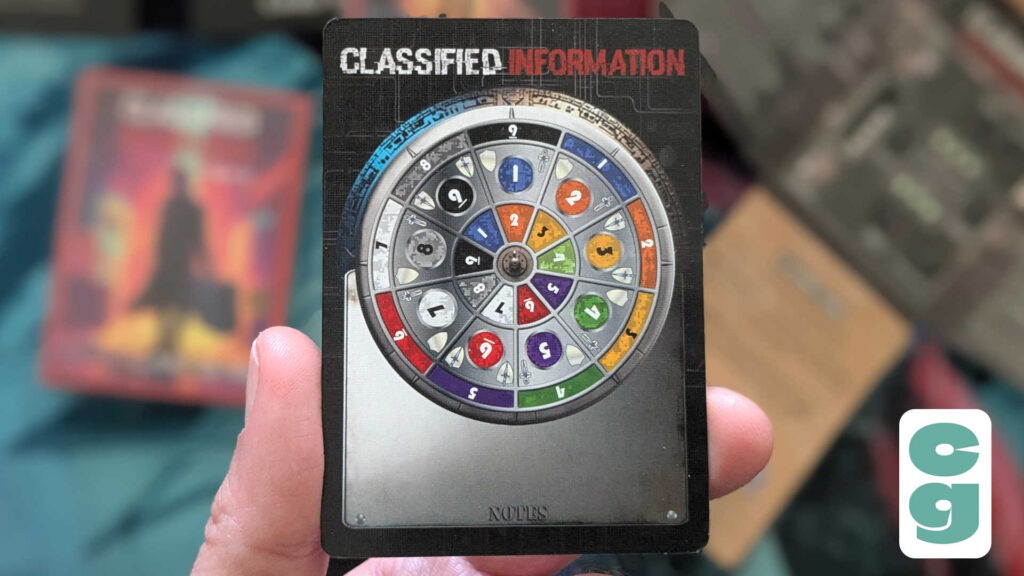
The minimalist design philosophy is genuinely impressive too, and this is demonstrated brilliantly with the game’s Cypher Wheel card, on which players note their observations about which cards are in play at any given time, to eliminate the possibilities of which cards their opponent may have in play as their Guards and Suitcase. There’s a phenomenal amount of information on this single card, with the different types of symbol on each numbered card, each card’s code and more being displayed here, at a glance.
Using dry wipe marker pens (players can use their own, or two are included in both the pouch and Deluxe Edition of the game), the deduction process becomes straightforward, and the eliminating of known information turns any player into an instant detective.
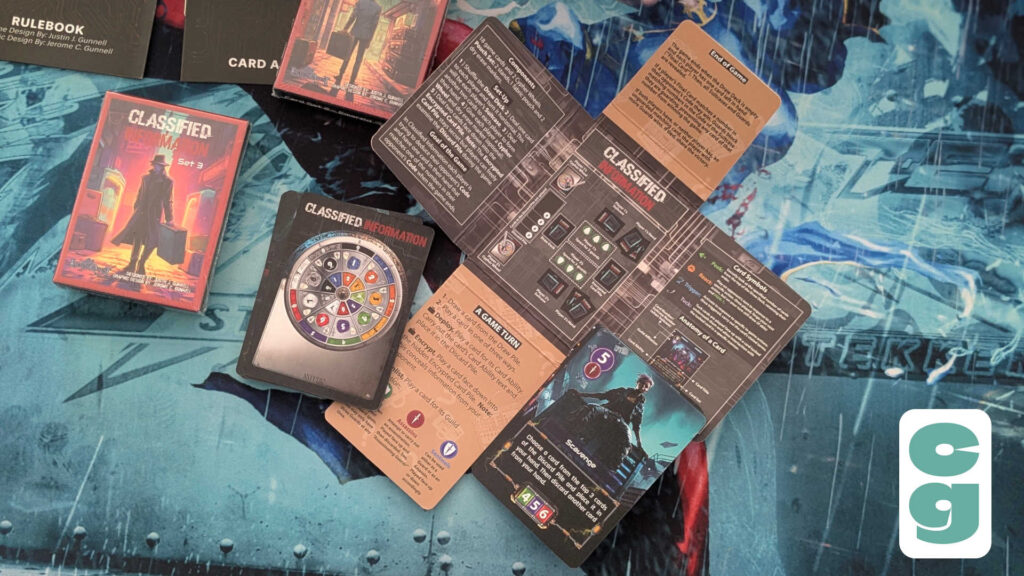
The minimalism even extends to the each separate deck’s packaging, which unfolds to helpfully give a rules overview, game layout and card anatomy, which is a truly clever touch. That said, if you want to go bigger and take on the less-than-minimal Deluxe Edition, it features plenty of useful extras; not only are there multiple decks to try out (and you can even take a stab at mixing and matching decks, as long as you follow the deck building rules), but there are also cute plastic suitcase tokens to mark victories if you’re looking to play multiple rounds.
Given the game’s small box nature and lack of components in its standard edition, the Deluxe Edition does, however, feel a little bit like overkill in terms of its size. It’s worth noting that it does feel somewhat future proofed in terms of having space for future expansions, and does offer good solutions for storage of each deck, but it does seem a little at odds with the otherwise space-conscious design of Classified Information in general.
The Card Gamer Verdict
Despite the fact that the art is a little murky and the cyberpunk theme does feel a bit abstract during play, Classified Information is a game which makes great use of its minimal components, providing players with a clever game of deduction that stands up to, and is even strengthened by, repeat play.
The standard version of the game is compact and offers plenty of bang for your buck, but the Deluxe Edition of Classified Information offers a much wider range of gameplay and customization possibilities, as well as more components to aid play, and won’t break the bank.
Though the various concepts and multi-use cards initially make it difficult to get to grips with, games of Classified Information don’t outstay their welcome, with each round playing in 10-15 minutes at most. It’s a game with a surprising depth and wealth of options, given that it plays with such a small number of cards. If you think that a two-player deduction game is something that wouldn’t work, give Classified Information a try; you’ll be surprised at how much it can do with the concept.
Want to check out other standalone two-player games? Check out our review of Jaipur, and our review of Mindbug, each of which offer a great deal of longevity for just two players!


